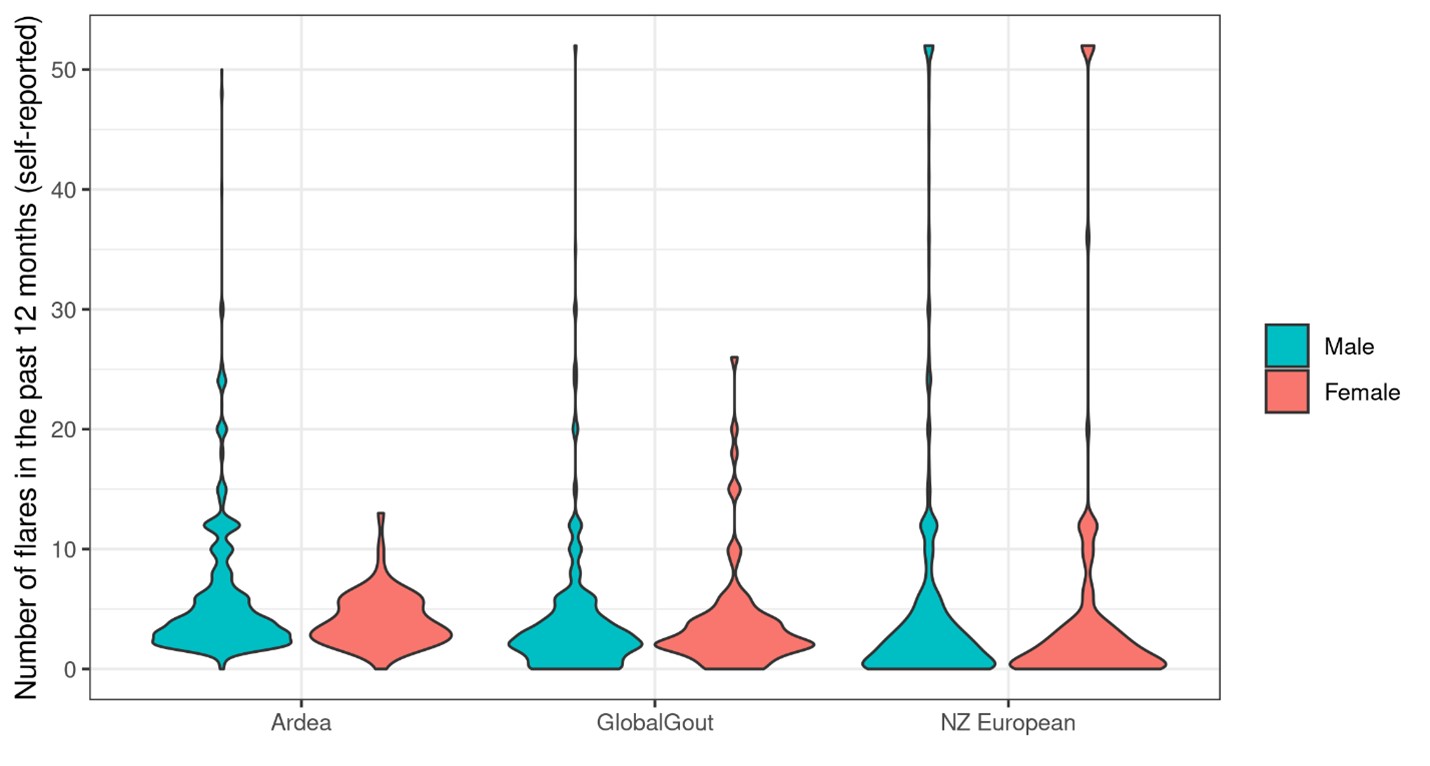Session Information
Date: Sunday, November 7, 2021
Title: Metabolic & Crystal Arthropathies – Basic & Clinical Science Poster I (0660–0682)
Session Type: Poster Session B
Session Time: 8:30AM-10:30AM
Background/Purpose: There is increasing recognition of gout among women. The postmenopausal rise in serum urate levels in women increases the risk for the development of gout. Compared with men with gout, women with gout are older and had a more significant burden of comorbid conditions, including hypertension, diabetes, chronic kidney disease, obesity, and diuretic use (1). The risk of flares is associated with older age and cardiometabolic comorbidities. Female gout patients with cardiometabolic comorbidities were 60% more likely to have flared as compared with 10% in men (2,3). The profiles of women and men with gout are markedly different. Do women, especially women older than 65, have more frequent gout flares than men?
Methods: Using three cohorts of European gout patients from New Zealand (NZ European; 715 male, 147 female), USA (Ardea; 1,121 male, 57 female), and several European countries (GlobalGout; 726 male, 83 female) respectively, we analyzed sex differences between the number of self-reported flares in the last 12 months. We also filtered for individuals older than three age thresholds: > 65, > 75, and > 85 years old. Since there was significant skew in the flare data, we performed a non-parametric Wilcoxon rank-sum test in each cohort to statistically test for a difference in the mean number of flares between males and females. Bonferroni corrected P-value of 0.017 (0.05 / 3) was used for significance testing.
Results: There was a non-significant difference in flare rate between males and females within each cohort (Ardea p = 0.11, GlobalGout p = 0.51, NZ European p = 0.055). Figure 1 shows the distribution of flares in the past 12 months among males and females in each cohort, demonstrating the non-significant difference in flare rate between malesand females within each cohort. In addition, no significant difference in flare rate between sexes when filtering for individuals older than either of three age thresholds: > 70 years old: 401 male, 125 female – p-value = 0.76; > 75 years old: 188 male, 76 female – p-value = 0.61.
Conclusion: In this large cohort of gout patients, we found the rate of self- -reported gout flares in women similar to those of men.
References
1. Lally et al. Arch Intern Med. 1986;146:2221–2225.
2. Harrold et al. BMC Musculoskelet Disord. 2017 14;18:108.
3. Primatesta et al. BMC Musculoskelet Disord 2011;12:103.
To cite this abstract in AMA style:
Schlesinger N, Sumpter N, Dalbeth N, Stamp L, Merriman T. Is There a Difference in Self-reported Flare Frequency Between Men and Women? [abstract]. Arthritis Rheumatol. 2021; 73 (suppl 9). https://acrabstracts.org/abstract/is-there-a-difference-in-self-reported-flare-frequency-between-men-and-women/. Accessed .« Back to ACR Convergence 2021
ACR Meeting Abstracts - https://acrabstracts.org/abstract/is-there-a-difference-in-self-reported-flare-frequency-between-men-and-women/

